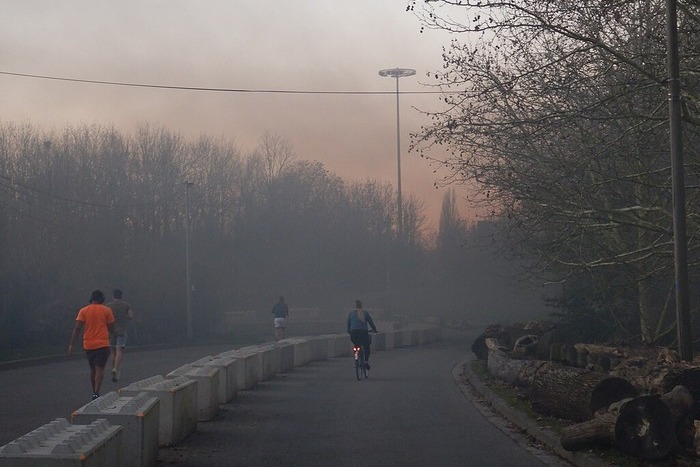According to new research, if the air quality of Delhi was improved to meet the standards of the World Health Organization (WHO), an average Delhi resident could live 8.2 years longer, DTE reported. The research by The Energy Policy Institute at the University of Chicago (EPIC) found that the loss in life expectancy to high PM2.5 (particulate matter 2.5) was globally the highest in National Capital Territory (NCT) Delhi.
In India, an average resident of the Indo-Gangetic Plains of North India could live five years longer if particulate concentrations met the WHO guideline of 5 microgram per cubic metre (µg/m³).
The report released on August 28 said particulate pollution’s toll on life expectancy is more than four times that of alcohol use, five times that of transport injuries or unsafe water, sanitation, and handwashing, and more than six times that of HIV/AIDS.
In India, the country with the highest health burden of pollution in South Asia, the particulate concentration in 2023 was 41 µg/m³—more than eight times the WHO guideline, and slightly higher than the country’s national ambient PM2.5 standard of 40 µg/m, the report said.
NGT orders suo motu action against J&K officials who ordered felling of 1,000 trees
India’s green court, the National Green Tribunal (NGT), ordered the Jammu & Kashmir government to punish officials, who allowed the felling of over 1,000 trees in Kupwara without proper clearances. The tribunal demanded a comprehensive affidavit from the chief secretary, detailing the violations and ensuring compensation for the forest department is paid, reported DTE.
Remediation work starts at 7 sites identified by CPCB across the country: Government
The Union environment ministry informed Lok Sabha that remediation activities have commenced at 7 out of the 103 contaminated sites identified by the Central Pollution Control Board across the country, reported HT.
This development came after Minister of State for Environment Kirti Vardhan Singh’s announcement that the Environment Protection (Management of Contaminated Sites) Rules, 2025, outline the process for identifying and remediating contaminated sites. The government notified these rules on July 24.
The rule gives a state’s pollution control board power to notify a site as contaminated if the containment is above a certain threshold after the completion of site assessment.
Over 98% Total Fly Ash Generated in FY25 Utilised Across Infra and Industrial Sector
India generated 340.11 million tonnes of fly ash in FY24 of which 332.63 million tonnes i.e. 98% was utilised across the industrial and infrastructure sector as per the data shared at the National Conference on Fly Ash Utilisation and Transportation, reported ET Energyworld.
According to the officials, railways are providing an economical and sustainable mode of fly ash movement through attractive freight concessions. Government policy has mandated the use of fly ash in infrastructure and building materials as these measures are aimed at safe disposal of the thermal by-product and promoting circular economy.
About The Author
You may also like
Govt Says No Conclusive Data Relating Deaths to Pollution
Parents, Activists Protests at India Gate as Air Turns Toxic
Top court allows ‘green firecrackers’ in Delhi on Diwali with conditions
CPCB should help industry meet green norms: Environment Minister
Noise pollution from trains hit surrounding homes, exceed limits by 85%

